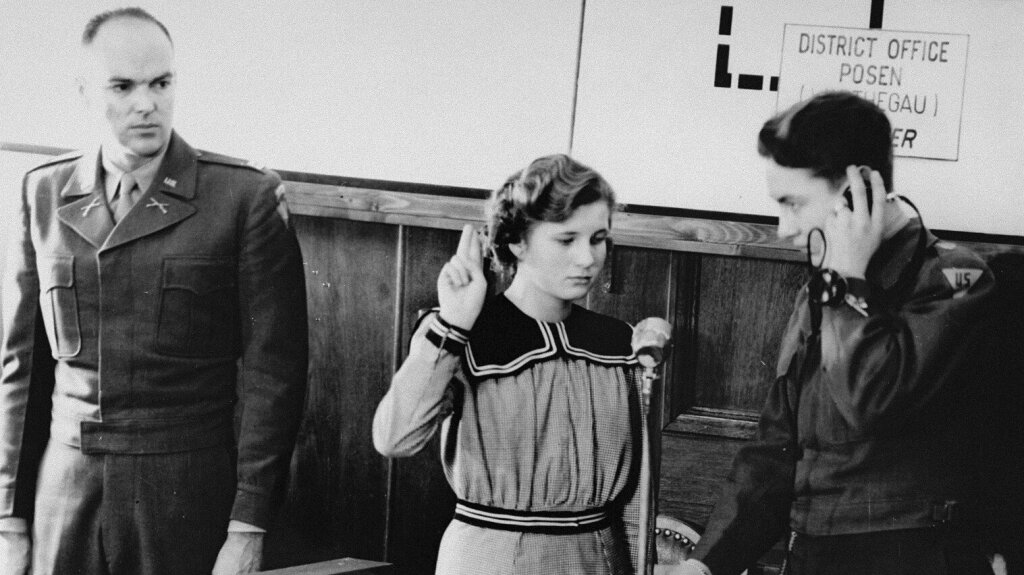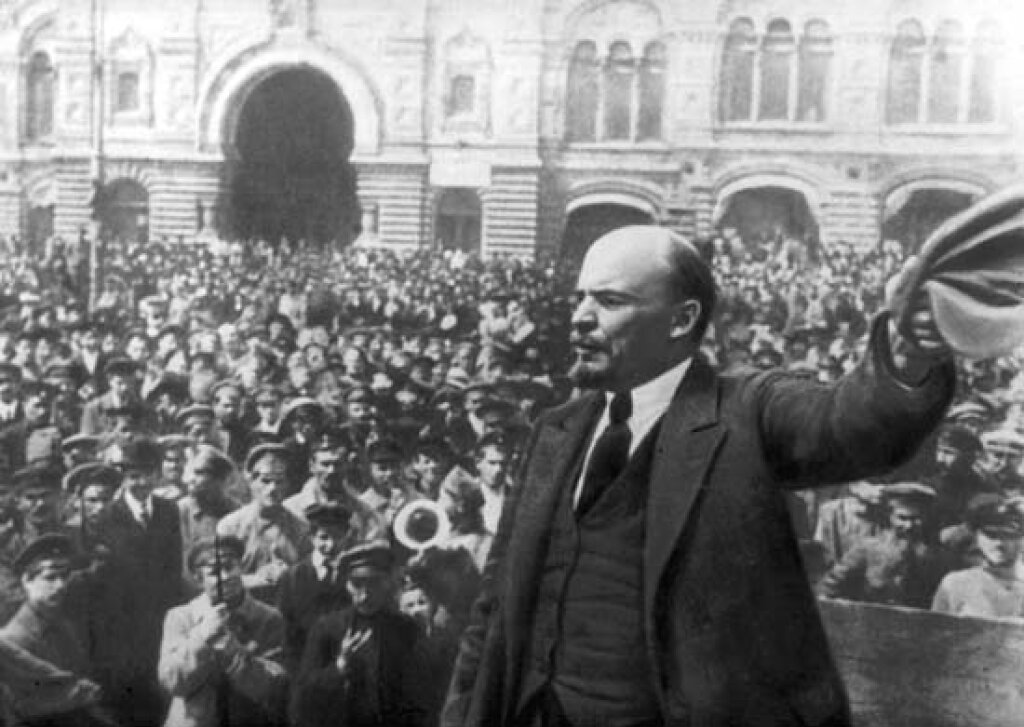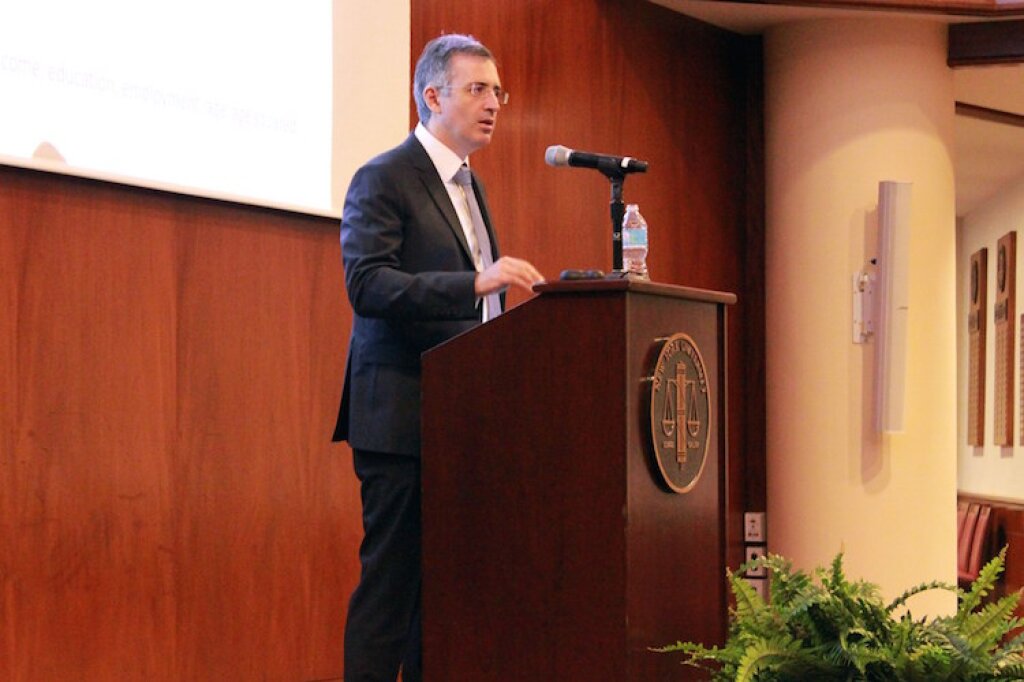Above: Marie Šupíková, a survivor of the June 1942 Lidice massacre, is sworn in ahead of her testimony at the Nuremberg Trials.
On October 1, 2021, the Jordan Center hosted Professor Francine Hirsch, Vilas Distinguished Achievement Professor of History at the University of Wisconsin-Madison, for a talk about her book, Soviet Judgment at Nuremberg: A New History of the International Military Tribunal after World War II, out in 2020 from Oxford University Press. A recap of this event is available on YouTube here.
This volume is one of the first to give a complete history of the Nuremberg trials, explicating the Soviet role in the event. Taking place been November 20 and October 1, 1945 at the Palace of Justice in Germany, the trials saw Great Britain, France, the United States, and the Soviet Union cooperating to try 22 Nazi leaders. The list included Hermann Goering, Rudolf Hess, Johann von Ribbentrop, and Wilhelm Keitel, and the charges were conspiracy, crimes against peace, war crimes, and crimes against humanity. On the docket were also six Nazi organizations, including the Gestapo and the SS.
The Soviet Union played a complicated but instrumental role in the proceeding, which Hirsch finds is often glossed over or even left out from Anglo-American histories of the war. Her aim, by contrast, is to “to tell a good story,” introducing "a new cast of characters” into conversations about the Nuremberg trials, and to show the trial through as the Soviets saw it.
Hirsch’s book contains four main arguments. The first is that without the Soviet Union, the trials would not have happened at all. Even as far back as 1942, Molotov called for an international tribunal in April of 1942 to adjudicate atrocities then being committed by the Nazis. Several countries were resistant to this idea, including the United States, which feared retaliation against prisoners of war by their Nazi captors. By war's end, however, the Soviet Union successfully spurred the Nuremberg trials into action.
At the same time, Hirsch argues, the Soviets “were greatly handicapped on an international stage by the constraints of Stalinism.” The Soviet Union expected guilty verdicts and hangings across the board, especially given the USSR's vast losses. They believed that as the war's victors, they would have their way with the losers, going as far as to attempt to pin Soviet crimes on the Nazis. The Soviet representatives did not believe that the defendants would be able to challenge the prosecution or even have access to legal representation. Famed Soviet prosecutor Andrei Vyshinsky, the legal architect of Stalin's Purge-era trials, was sent to Nuremberg to ensure that extremely sensitive evidence about the German-Soviet non- aggression pact was protected. So sure was he that convictions would ensure that he proposed a toast to the swift path “from the courthouse to the grave” for the Nazi defendants. The Soviets wanted more centralized control over the trial, while the British, French, and Americans did not — a resistance for which they were unprepared.
Hirsch further shows that the Soviets provided incredibly substantial proof of Hitler’s Final Solution. They had extensive documentary evidence of Jewish persecution and called seven eyewitnesses to provide moving firsthand testimony of Nazi crimes.
The fourth and final argument Hirsch presents in Soviet Judgment is that the Nuremberg trials were an early front of the Cold War, so that understanding Nuremberg “allows us to understand the postwar movement for human rights.” In March 1946, Winston Churchill gave his famous “Iron Curtain” speech. A day later, the Nuremberg trials moved into their defense stage. The very existence of a defense upset the Soviets, a fact that defense attorneys as a wedge to drive Russia and the United States even further apart. Western judges were afraid of a “victor’s justice” and wanted to preserve the integrity of the trials, which made them even more forgiving toward the defense than the prosecution expected. This turn of events disappointed the Soviets, who “never expected their own actions to be subject to scrutiny.” The result was a heightening of tensions that helped usher in the Cold War.
Subsequently, the history of the Nuremberg trials became entangled with both the Cold War and human rights activism. The idea that Nuremberg was “fully grounded in Western liberal law,” as Hirsch says, does not accord with the reality. For Hirsch, it is crucial to give a full accounting of the trials that includes the role the Soviet Union played, a fuller story that exposes the “perils and possibilities of international cooperation.” Ultimately, Soviet Judgment demonstrates the continued relevance of the Nuremberg trials, which sparked an international conversation about the nature of war and human rights that continues to this day.



